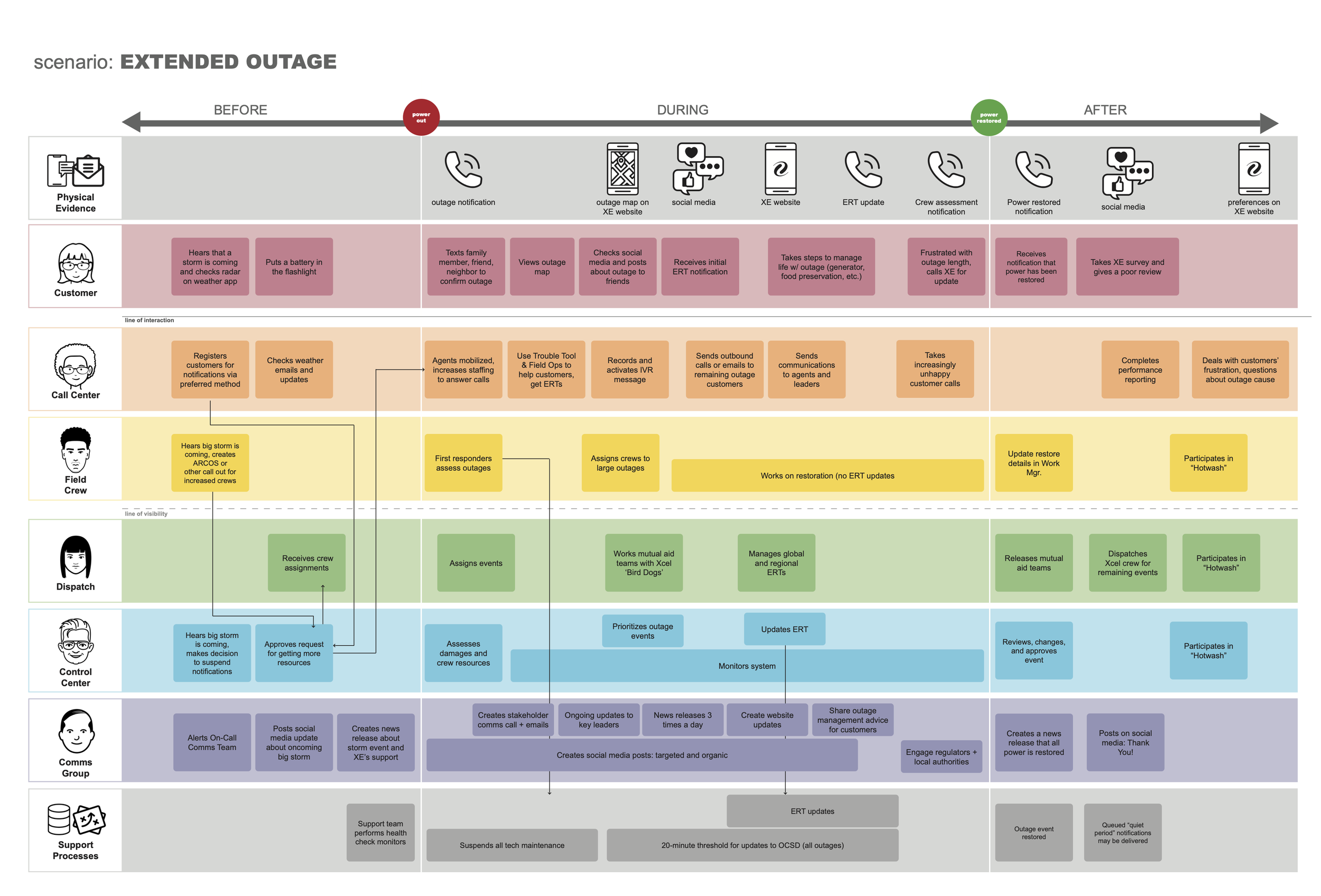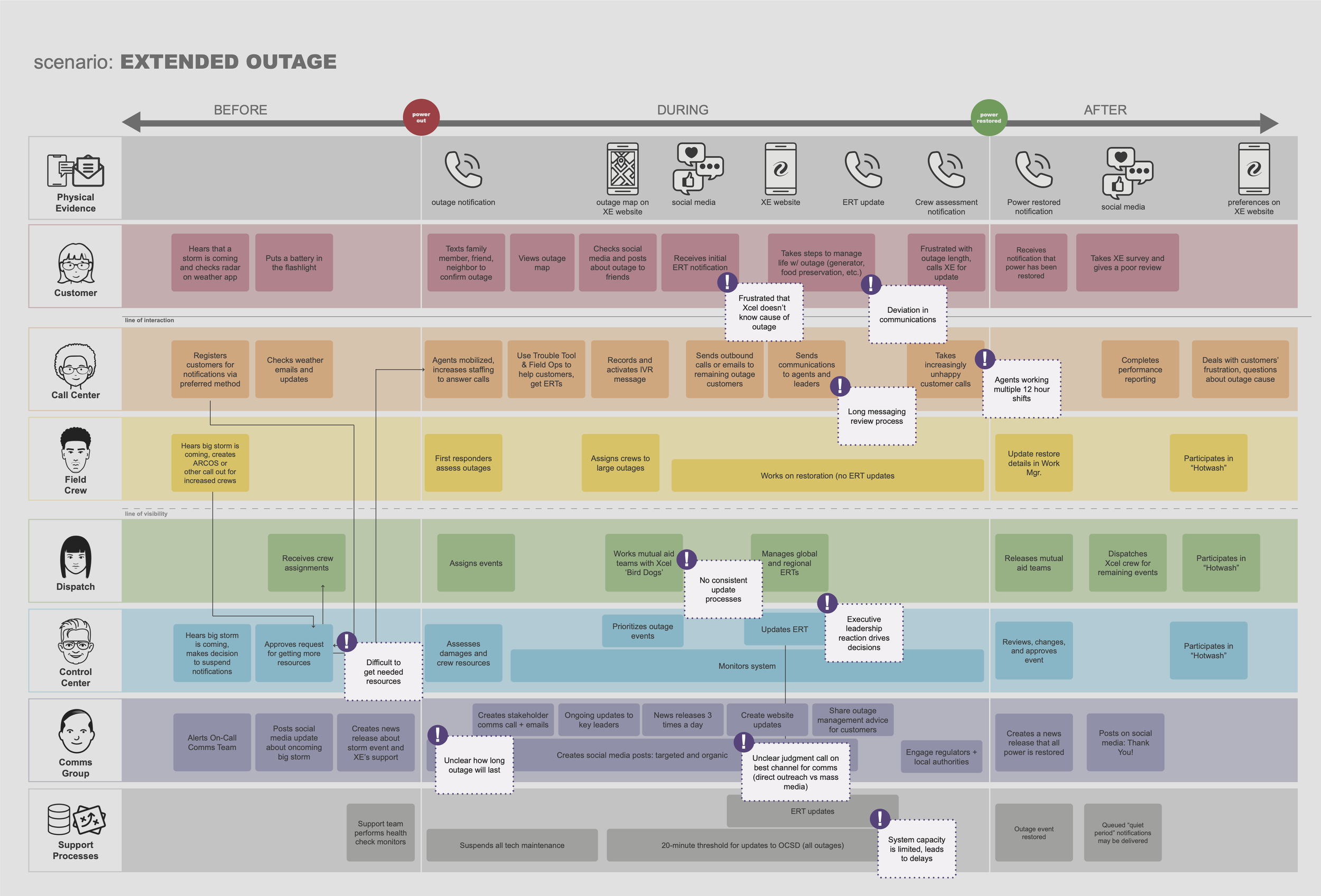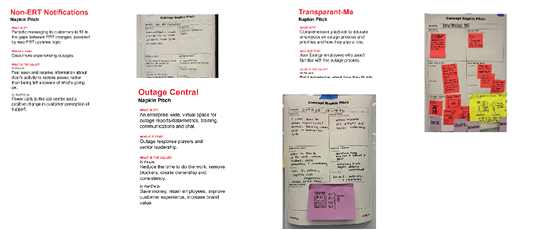
ENHANCING OUTAGE MANAGEMENT COMMUNICATION PROCESSES
THE CHALLENGE
Inconsistency in communications, including notifications and ERTs, during outages is contributing to a poor experience for 1 out of every 4 Xcel Energy customers who experience an outage.
APPROACH + ACTIVITIES
OBJECTIVES
Working with the Director of Product Management, we identified a project approach organized around the following objectives:
• Re-establish a baseline understanding of current processes and systems involved in the end-to-end outage experience
• Validate pain points in the internal process that lead to pain points in the customer experience
• Ideate ways to manage or eliminate pain points and improve internal communication and collaboration
• Recommit to team roles in improving the outage experience
With the partnership of the Customer Experience team, XCELab conducted interviews with internal stakeholders involved in the outage communication process. Armed with those insights and documentation on the process we designed a full-day interactive workshop.
10 stakeholder interviews to document current state process and pain points
Analysis of current customer research, in partnership with customer experience team
DELIVERABLES
OUTCOMES + NEXT STEPS
Addressed Immediate Opportunity
• Process owners made immediate changes to criteria to improve location-based notifications to ensure only affected customers were contacted with outage updates
Full-day interactive working session with cross-functional team including Customer Care, Control Center Operations, Communications, and Product Management
Session focused on creating service blueprints for three customer experience scenarios, identifying and prioritizing the most acute pain points, and ideating future experience concepts with next steps for each near-term idea
Three Service Blueprints
For each of three prioritized outage scenarios, we created a representative service blueprint based on the review and validation of each experience during our working session.
The primary view of the service blueprint (left) included activities for each stakeholder group that occur before, during, and after the outage. Key activities were connected across groups at moments where there are sequential or interacted actions taking place across stakeholders or teams throughout the experience.
Special attention was paid to creating a lane for “Support Processes” which identified specific outage management software actions that were to be part of a future session dedicated to identifying requirements for a new management system.
The secondary view for each service blueprint (left) was used to callout the pain points that were prioritized by working groups during the session. These pain points were identified as having the largest (negative) impact on the experience and were used as opportunity areas to inspire future experience concept ideation
Napkin Pitch Overviews
This project was scoped around a preliminary current state experience validation phase for which the main deliverables were the three service blueprints, but we did create initial overviews of the concepts that were created during our session ideation as a potential input to future work.
For each concept, these overviews included a main concept title and description, intended audience, and perceived value for the end user and Xcel Energy.
Created Clear Ownership
• A working team/task force with dedicated time to the outage experience initiative was established
Built Momentum
• Action plans with potential next steps for 30, 60, and 90 days were developed for 7 ideas originating at the workshop


